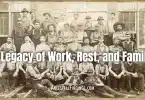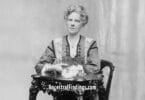Bob Waldmire is a name that resonates with the spirit of the open road, particularly the storied Route 66. A staunch advocate of the nomadic lifestyle, Waldmire’s legacy is that of an artist, a champion of American travel, and a custodian of the highway’s culture. His life and works are celebrated for encapsulating the essence of Route 66 through his detailed, hand-drawn maps and postcards, created from the heart of his unique, customized VW Bus.
The Artist’s Path
In Springfield, Illinois, on April 19, 1945, Bob Waldmire’s journey took root. His father, Ed Waldmire Sr., was the innovator behind the Cozy Dog—a breaded, deep-fried hot dog on a stick—that became synonymous with Route 66 eateries. Bob’s childhood, infused with the allure of the highway, deeply influenced his path.
The 1960s saw the flourishing of Waldmire’s artistic ambitions. His hand-drawn maps, “Bob Waldmire’s Atlas of Route 66,” offered travelers and enthusiasts an intimate glimpse into the route’s culture and landmarks. His work didn’t just map a route; it mapped a narrative.
The 1972 orange VW Microbus, emblazoned with Waldmire’s psychedelic art and Route 66 memorabilia, emerged as a countercultural icon and a beloved fixture on the highway. His artistry also extended to postcards, each a miniaturized homage to the route’s quirky charm and nostalgic appeal, becoming treasured keepsakes for many.
Embodying Route 66
Waldmire was more than a passerby on Route 66; he embodied its ethos. His life, spent on wheels in his cherished Microbus, was a testament to his commitment to the traveler’s lifestyle. Known for his hospitality, he often picked up hitchhikers, exchanging stories and art, leaving a lasting impact on those he met.
His commitment to the environment paralleled his artistic endeavors. Through his art and lifestyle, Waldmire raised awareness about conservation, advocating for a cleaner and more sustainable world.
Although Waldmire’s journey ended on December 16, 2009, his influence endures. His maps, postcards, and the indomitable spirit he shared with Route 66 continue to inspire a new generation of travelers and dreamers.
The Legacy of Bob Waldmire
Waldmire’s impact on Route 66 culture is indelible. His artwork and postcards are more than just mementos; they are guardians of memory, capturing the road’s soul. They remind us that he was not merely an artist but a steward of the environment and a free spirit who lived in harmony with the road he cherished. His memory continues to fuel the wanderlust of those traveling Route 66 today.
His postcards, each a distinct piece of art, have become collector’s items. The Cozy Dog Drive-In, Hackberry General Store, his iconic VW Microbus, Arizona’s desert landscape, and the Dino Gas Station postcards are emblems of his artistry and love for Route 66.
Finding Waldmire’s postcards can be akin to a treasure hunt, with enthusiasts scouring Route 66 museums, online auctions, collectible stores, festivals, antique shops, and private collectors to find a piece of this legacy. His postcards serve as collectibles and fragments of American history, cherished by those who hold Route 66 close to their hearts.
While the whereabouts of the original drawings for Waldmire’s postcards may be uncertain—perhaps with collectors, institutions, or his family—prints of his work remain accessible for those who wish to keep a piece of iconic Americana. Whether through museums, enthusiast communities, auctions, or Bob’s estate, the hunt for these originals is a journey of its own, requiring patience and perseverance.
Bob Waldmire’s artistic contributions are a vibrant part of the Route 66 narrative. His postcards and maps are a testament to his talent and his profound connection with the road and the culture it represents. Owning a Waldmire postcard is to own a chapter of America’s most romanticized highway story.






